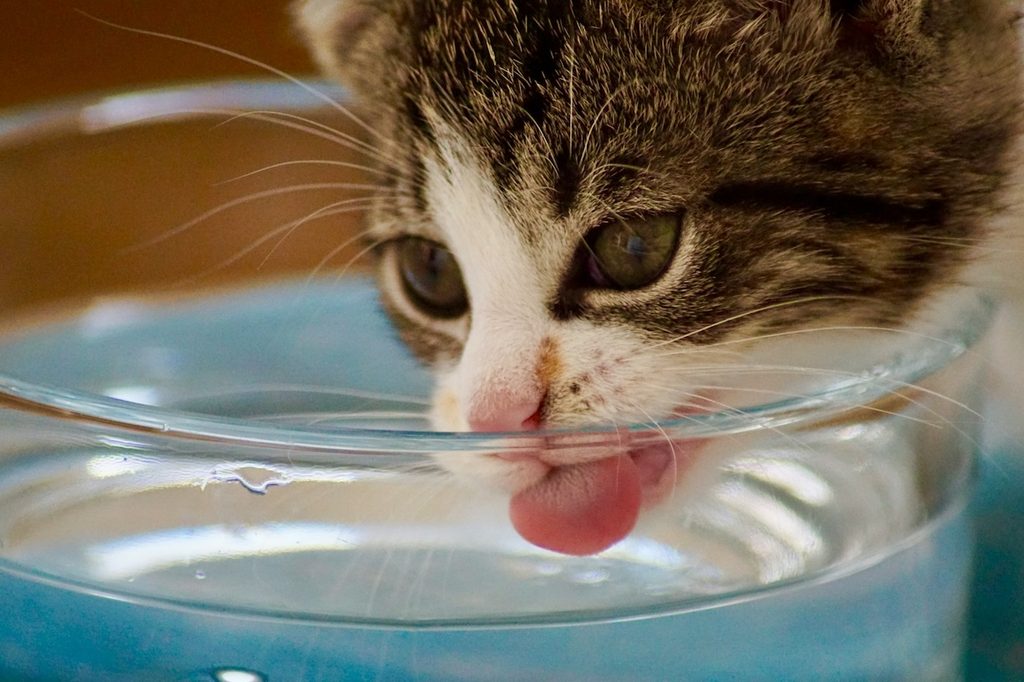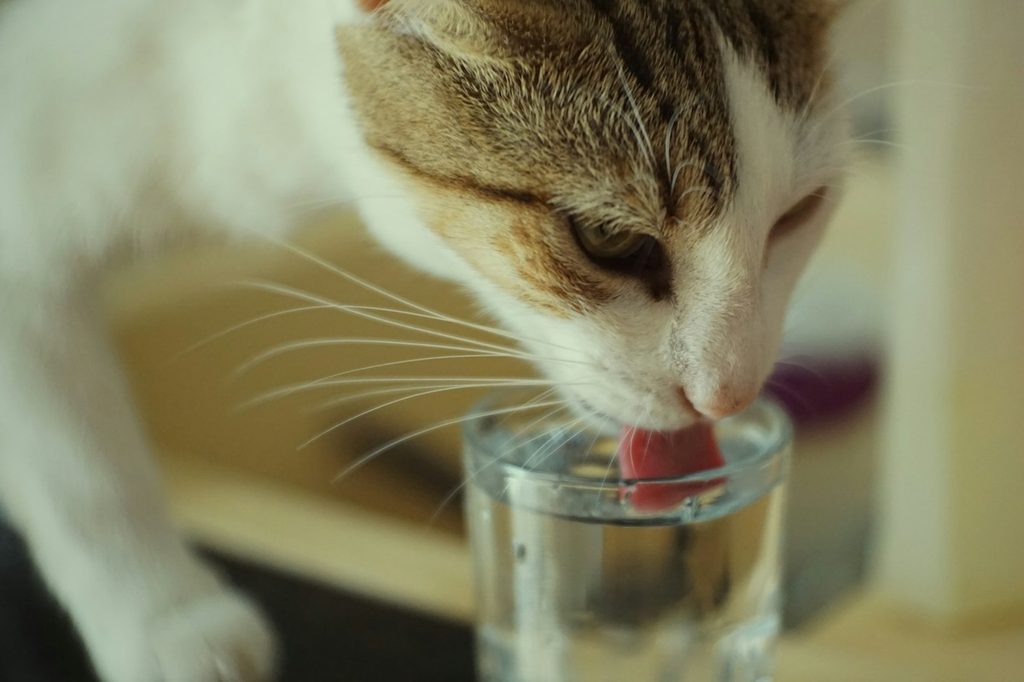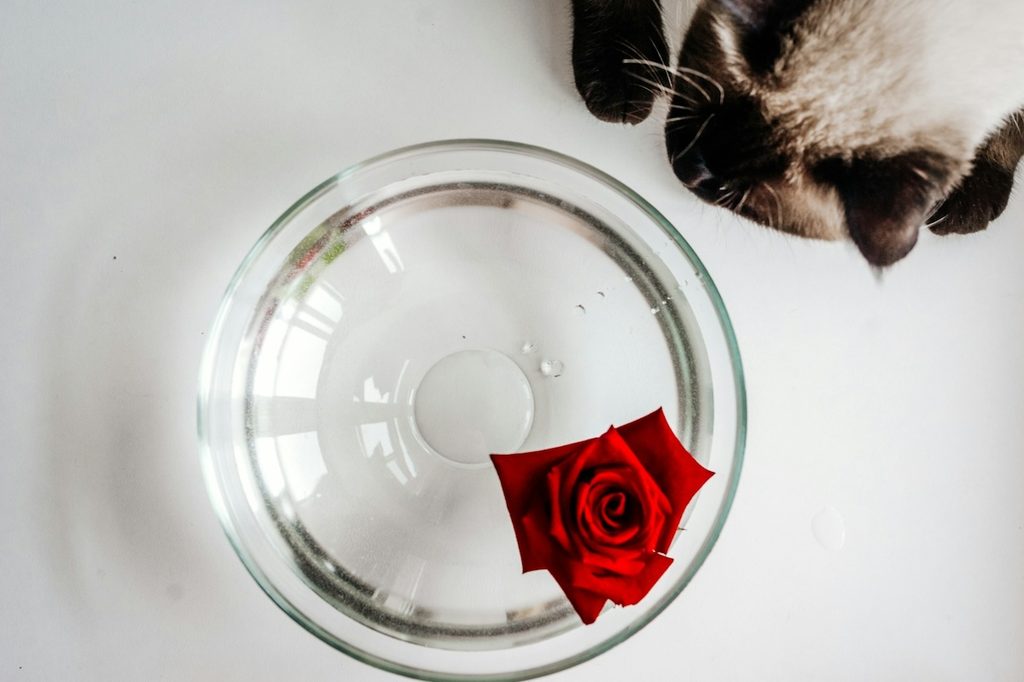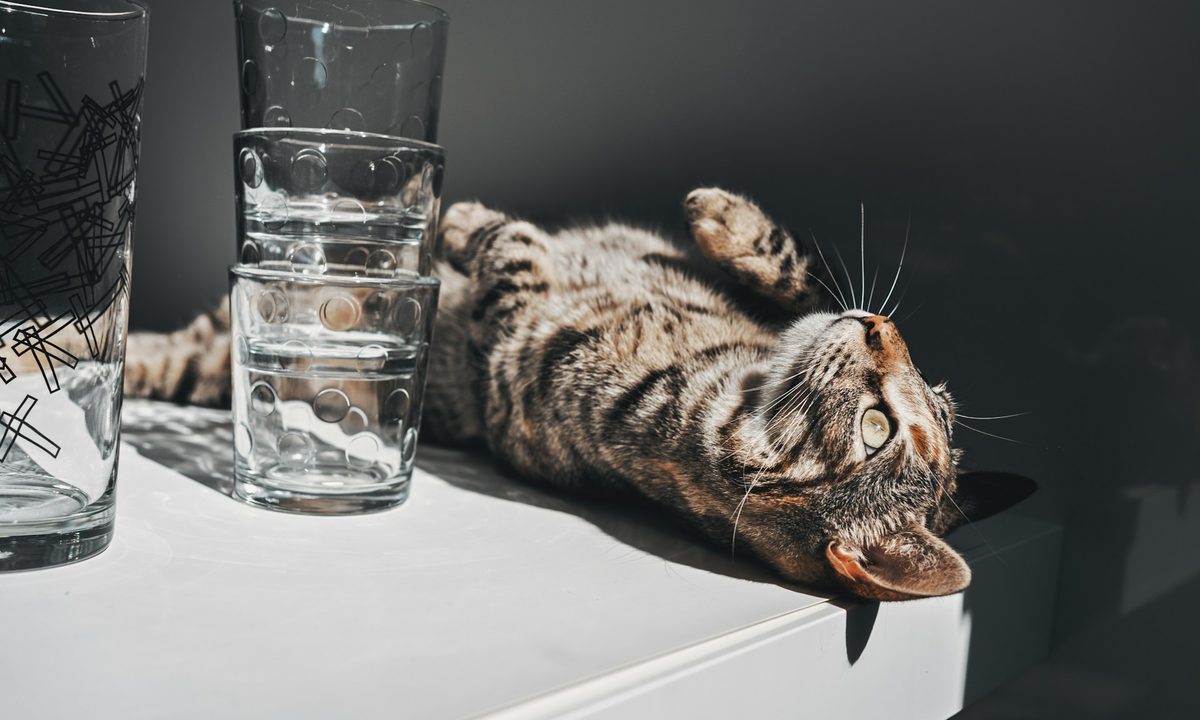You read up on the importance of ensuring your cat remains hydrated and went all out, purchasing the shiniest stainless steel bowl. Or, perhaps you let your sofa lion indulge in their wild side and got them a fountain resembling a stream. You shelled out serious dough for a cool water bowl, yet your cat insists on drinking out of your water cup.
Why does my cat drink out of my cup? Sure, sharing is caring, but you may not have signed up to swap spit with your cat. It’s understandable — your kitty cleans themselves with the tongue they’re dipping into your glass. While some felines may limit their alternative hydration strategies to your glass, you may also notice your pet drinking from the sink faucet, bathtub, and toilet. It is important to pay attention to your cat’s drinking habits, including understanding why they drink out of your water cup (and other places besides their designated bowl).
Why does my cat drink out of my cup?

Cats can drink out of water cups for various reasons, so you’ll want to consider your pet’s health, living situation, preferences, and version of normal. However, generally, these are common reasons why your cat may be taking “swigs” out of your H2O cup.
Thirst (and an empty bowl)
Perhaps the most obvious reason a cat may turn to your water cup (or elsewhere) is that they’re thirsty, but their bowl doesn’t runneth over. In fact, the bowl is bone dry, and they can see their reflection. Keep a close eye on their bowl and refill it when it’s empty. Multiple bowls around the house give your cat options, including temporary ones if their favorite bowl is dry.
Freshness
Unlike the Standells, cats don’t “love that dirty water.” Your cat may have water in their dish but may want a refresh. Your water may be filtered and fresh from the pitcher or fridge dispenser, and your cat understandably prefers it that way.
Temperature
You may have heard cats are finicky. Your kitty may have some hot takes on water temperature. Perhaps your pet prefers room temperature or likes their H2O cold. Does your water fit that bill and theirs not? You may have found your answer.
Experimentation
In addition to being picky, cats are curious. They may want to see what happens if they try your water. Does it taste better? Will you react and give them the attention and cuddles they’re actually craving? Your kitty is willing to mess around and find out.
Your cat hates their bowl
Sorry, but your best efforts — while noble, given the importance of hydration — may be lost on your cat. Your cat may not like your fountain or bowl but adore your glass.
Location
Before splurging on a new dish, consider whether location plays a role. Your cat may prefer the elevated spot of your cup. Kitties often don’t like having their food and water next to one another.
Other animals
If you have other animals, your cat may feel territorial or bullied by them. Alternatively, your cat may think their fur siblings are muddying the water. Either way, your water cup makes a worthy alternative.
Health conditions
Changes in drinking habits, especially an increased need for water, can be a sign of underlying health conditions, including:
- Hyperthyroidism
- Diabetes
- Kidney disease
How to get your cat to stop drinking out of your water cup ASAP

You love your cat and are happy to share a couch, snuggles, and bed. However, you may understandably draw the line at letting them drink out of your water cup. These tips will help you regain control over your H2O.
- Refill. Ensure your cat has clean, fresh water, changing it at least every three to four days (your cat may have shorter intervals). Regular hydration helps protect your pet from several health concerns, including dehydration, kidney issues, and UTIs.
- Switch the location. Move your cat’s water away from their food, or stick it on an elevated surface.
- Give your cat their own bowl. If you suspect territorial issues (on your cat’s part or another animal’s), ensure they have a personal bowl. Block off access so only they can drink from it.
- Change the temperature. Experiment with giving your cat water at a temperature similar to what they’re sipping from your cup.
- Try a new bowl or fountain. Play around with different types of bowls or a fountain to see if your cat has a different preference.
- Talk to the vet. When cats have health issues, they change their hydration habits. If none of the above solutions help, speak with the vet to rule out underlying conditions.
Closing thoughts

Cats require plenty of water — but not your water specifically. You may find your cat drinking from your water cup and wonder why. Good question. Cats sip out of their human’s water cups for various reasons. Their bowl may be empty, or the water may be dirty. Other times, another pet may be bullying your kitty and preventing them from drinking out of the bowl. Pinpoint your cat’s reason for drinking out of your water cup and adjust. Sometimes, your cat’s hydration needs can signify a health issue, so bring up concerns with the vet.




